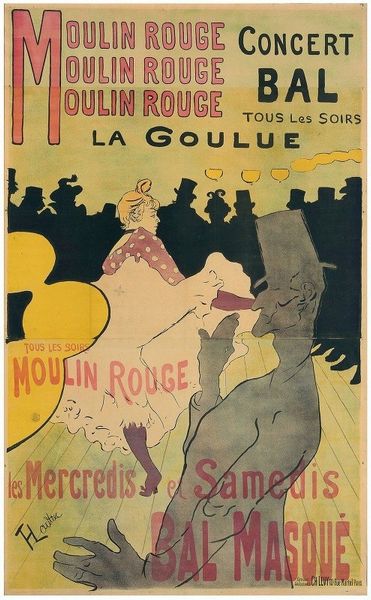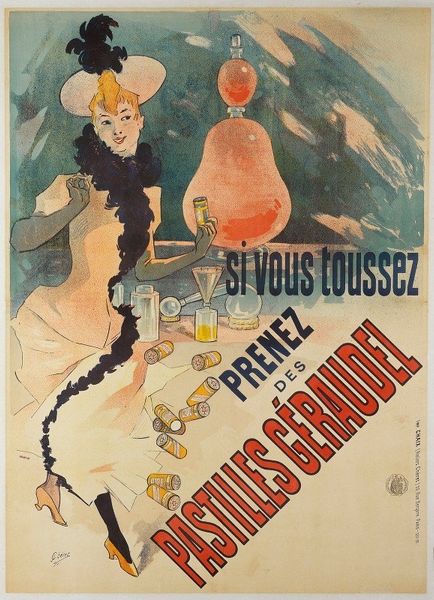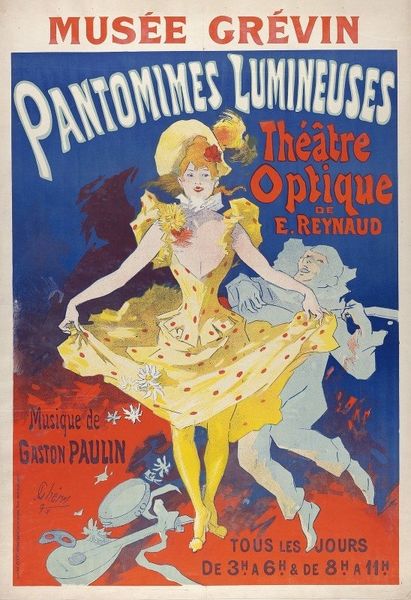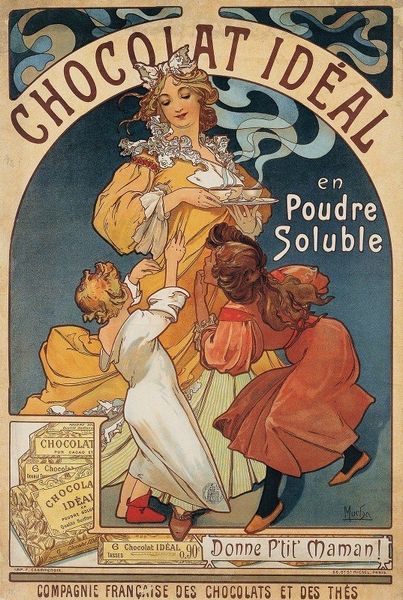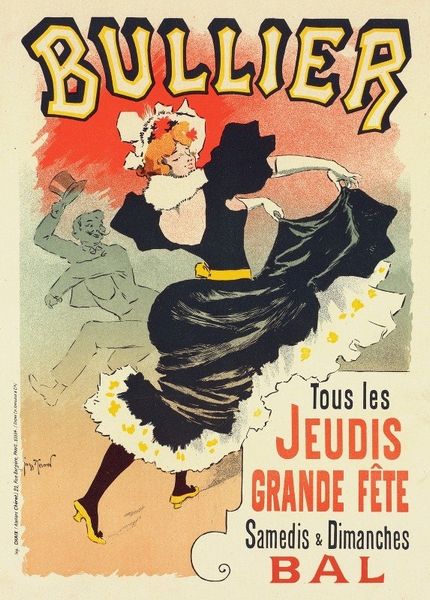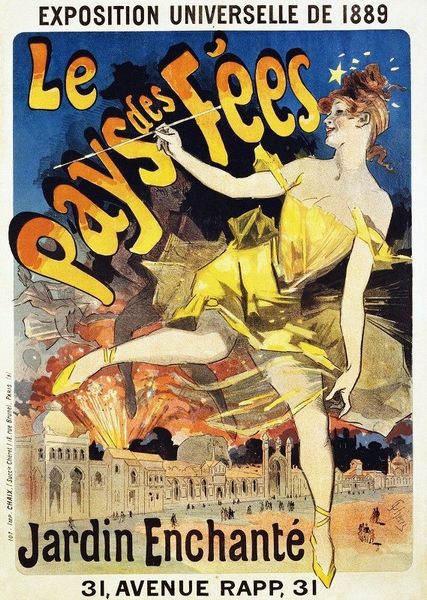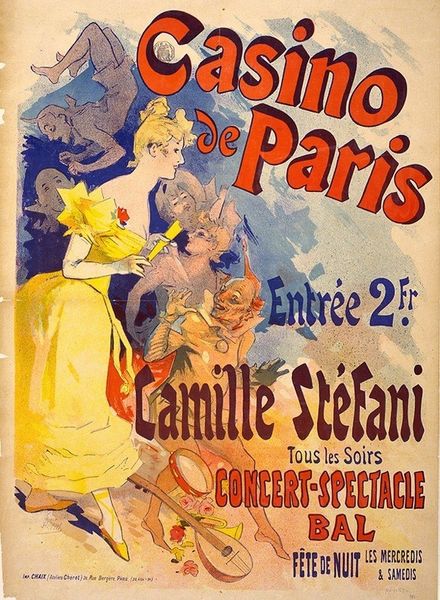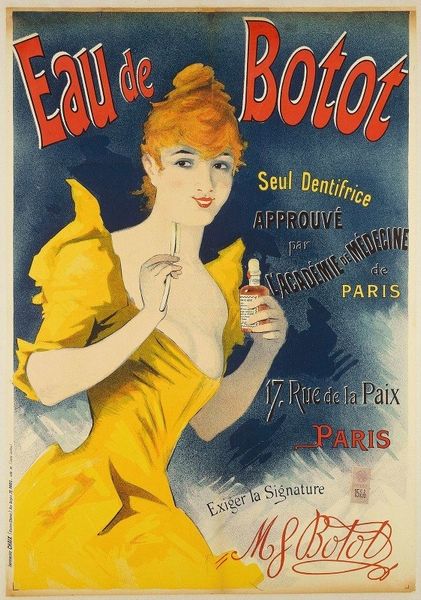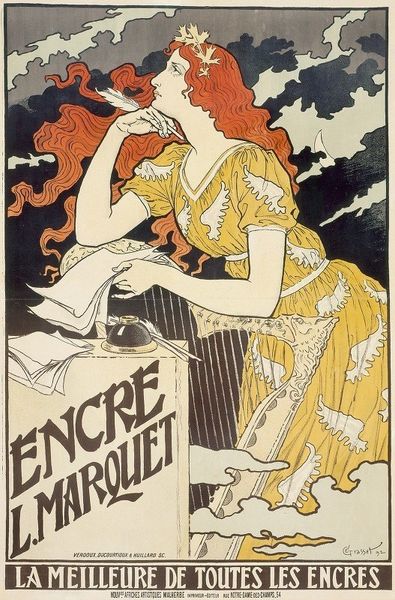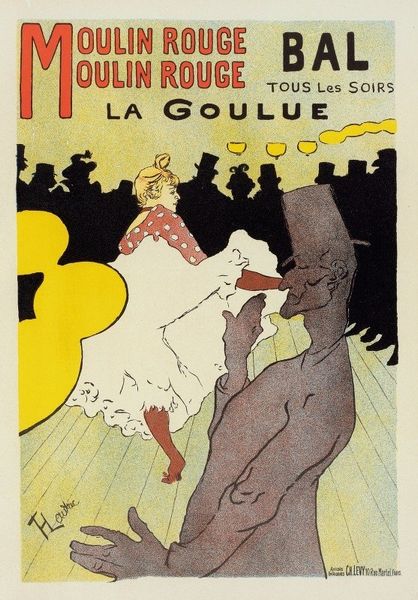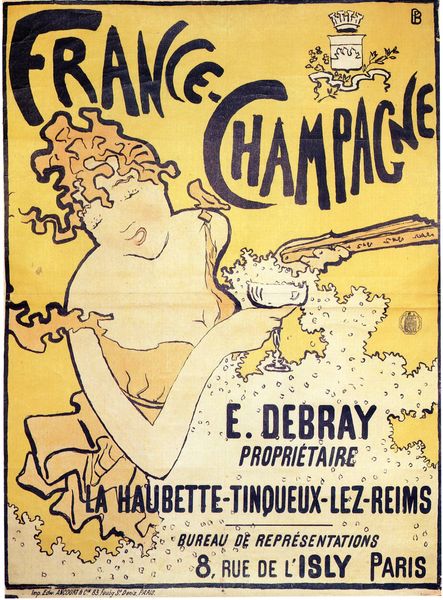
lithograph, print, poster
#
art-nouveau
#
hand-lettering
#
cartoon font
#
lithograph
# print
#
playful lettering
#
old engraving style
#
hand drawn type
#
hand lettering
#
figuration
#
word illustration
#
eye-catchy type
#
genre-painting
#
golden font
#
poster
#
word imagery
Copyright: Public Domain: Artvee
Editor: This lithograph poster from 1896 is called "L'Amant des Danseuses" by Jules Chéret. The playful lettering and depiction of dancers creates a really joyous atmosphere. What historical elements strike you when you see this, especially considering the culture around dance at the time? Curator: This poster speaks volumes about the changing role of women and public leisure in fin-de-siècle Paris. Chéret was known for revolutionizing advertising with his vibrant posters, creating a visual culture that reflected the city's burgeoning entertainment industry. These dance halls were spaces where social boundaries blurred, offering a temporary escape from rigid social norms. Does the poster celebrate this freedom, or does it reinforce certain expectations? Editor: I hadn’t thought about it that way, but looking at the image through the lens of social expectations, there is a somewhat objectifying gaze present. The women seem more decorative than empowered. Curator: Exactly! These posters, while seemingly liberating, often played a role in shaping perceptions of women and their role in the public sphere. They democratized art by making it accessible on the streets but were simultaneously tools of commercial and social messaging. How does the poster’s advertised availability "at all booksellers" impact your reading of it? Editor: That’s interesting. Selling it at bookstores suggests that posters were becoming a recognized art form or perhaps even a commodity beyond mere advertising. It points to a shift in how art and literature were intertwined. Curator: Precisely. And it highlights the complex relationship between art, commerce, and the social dynamics of the period. Examining those relationships helps us to go beyond its cheerful facade. Editor: Thanks. I'll never look at a poster quite the same way again! Curator: Likewise. Considering art's multifaceted public role is vital for all art historical analysis.
Comments
No comments
Be the first to comment and join the conversation on the ultimate creative platform.
